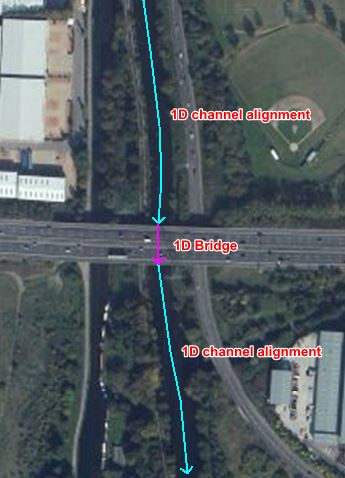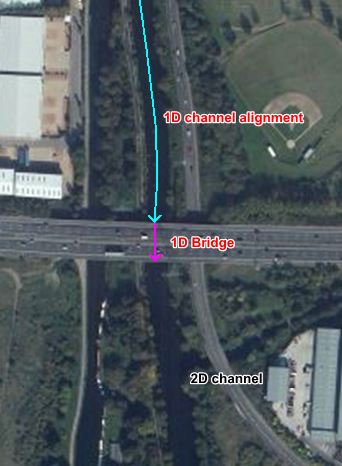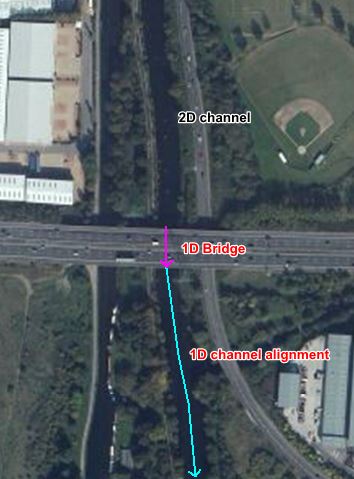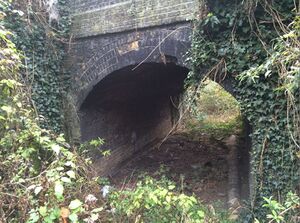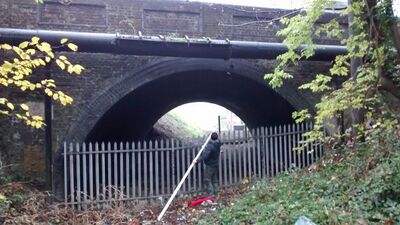1D Bridges
Page Under Construction
Introduction
The following section looks at bridges using the 1D component of TUFLOW, for information on bridges in the 2D domain please see the following section on 2D hydraulic Structures and Module 6.
1D Bridge channels do not require length, Manning's n, divergence or bed slope (so they are effectively zero-length channels) and rely on a reasonable estimate of energy losses associated with re-expansion of water after the vena-contracta (often referred to as entrance losses), expansion of water downstream (exit losses), pier losses, bridge deck and guard rail losses. Other factors include accounting for occurrence of bridge deck pressure flow and the effects of bridge skew and multiple bridges (shielding effects of an upstream bridge on a downstream bridge).
Care must be taken when choosing the approach to modelling the bridge and setting appropriate loss values.
As a typical rule-of-thumb, if the channel upstream &/or downstream of the bridge is modelled in 1D then the bridge should also be modelled in 1D. Ideally any change in the channel from ESTRY 1D to 2D or vice-versa should also occur at a structure (i.e. bridge, culvert, etc) to facilitate the transition in solution schemes. The images below displays a typical preferred setup, however as is the case with hydraulic modeling your particular model situation may be different and therefore not always conform to these ideals.
Example of a bridge that could be modeled in 1D
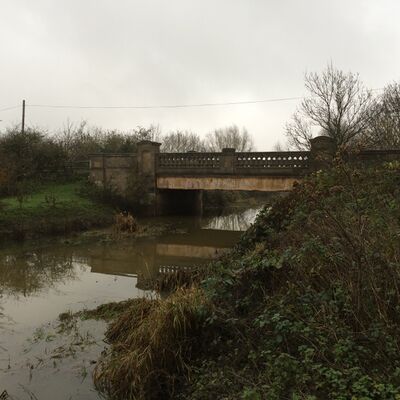
London, UK (pht: Rohan King)
Loss Theory
Details on how the default loss coefficient of 1.56 was derived can be found here.
- under construction
Pier Losses
- under construction
Irregular shaped bridges
In the UK arch shaped bridges can often be seen on waterways, whereas in Australia these types of structures are quite uncommon. Modelling an irregular shaped bridge utilises the hydraulic properties elevation-width (CS/HW) type cross section and an irregular type culvert.
- Methodology
-
1. Create a 1d_tab HW (height vs width) .csv file for each standard shape (ie. set up a database of the irregular shapes). For the height value you can start at a value of zero so that height becomes depth (this might making the .csv files easier). As the height increases the width changes to reflect the particular irregular shape you are modeling. In the example below, the width at the top of the arch (2.1m) is set to a small value of 0.001m as opposed to zero as the HW becomes NA past the top of the irregular shape.
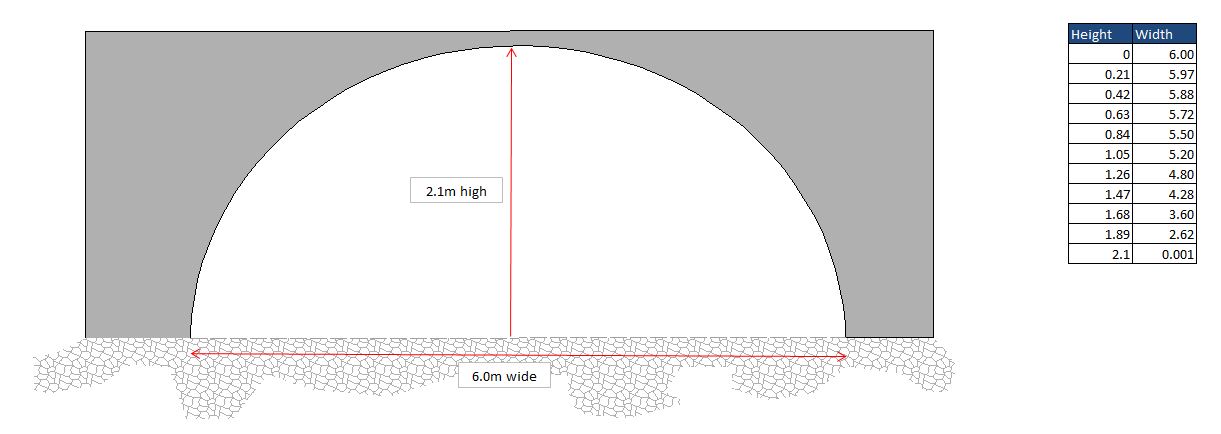
GIS example set up:
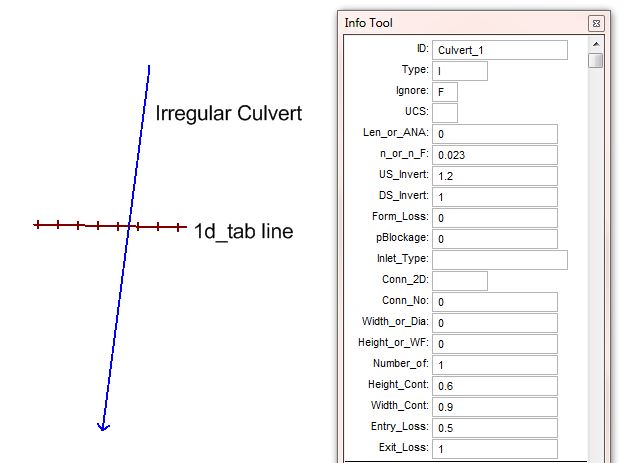
2. Any number of 1d_tab lines can reference the same .csv file, ie. you don't need to have a unique .csv file for every 1d_tab line.
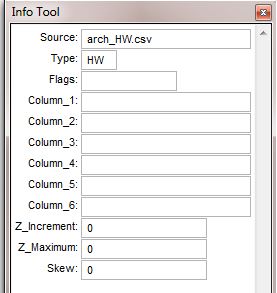
3. One option is to copy and paste the 1d_tab lines across each pipe (if you use a two vertex 1d_tab line there is no requirement that the 1d_tab line is snapped to the 1d_nwk pipe line - they just need to intersect). Each line will need to reference the relevant standard irregular shape HW .csv file (this could be automated using SQL Select if you have an attribute on the pipe to indicate which irregular shape it is).
4. The inverts of the pipes should raise or lower the standard irregular shape cross-section to the appropriate height.
- Real world examples
- Useful Forum Posts
Setting up an irregular 1D culvert.
Typical check files used
The table below highlights some of the commonly used check files when reviewing 1D bridges. The full list of TUFLOW check files can be found here.
Any further questions please email TUFLOW support: support@tuflow.com
Back to 1D Hydraulic Structures
